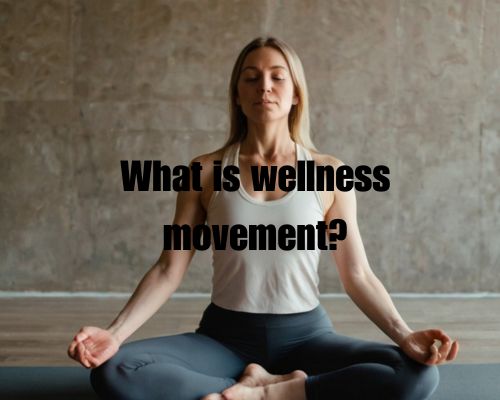What is Wellness Movement? Understanding Its Impact on Modern Lifestyle
Wellness is more than simply the absence of illness; it encompasses a holistic approach to optimizing well-being that goes beyond physical health.
Originating from ancient practices, today the wellness movement promotes healthy living by integrating mental, emotional, and physical health into daily routines. At its core, the wellness movement encourages you to take proactive steps towards a healthier, more balanced life.

In recent decades, the wellness movement has gained popularity, driven by a desire for a more fulfilling life and a deeper connection between mind and body.
This approach is reflected in lifestyle choices that promote exercise, nutrition, mindfulness, and stress reduction. As people become more aware of the benefits of maintaining a balanced state of well-being, the movement continues to inspire individuals to prioritize their health more consciously.
“Your well-being is intricately linked to the choices you make every day. Embracing wellness means being actively engaged in your health journey, making informed decisions that contribute to your overall happiness and life satisfaction.” said Jane Benson from Bikram Yoga Mornington.
This movement empowers you to create a blueprint for living well by understanding the synergy between your physical vitality, emotional resilience, and mental clarity.
Understanding the Wellness Movement
The wellness movement emphasizes a shift from reactive to proactive health practices. It integrates aspects of physical, mental, and spiritual health, often drawing from diverse traditions and emphasizing preventive care and holistic health approaches.
Historical Context and Evolution
The wellness movement has ancient roots. Practices such as Ayurveda and Traditional Chinese Medicine (TCM) have long advocated for a holistic approach. These traditions focus on balancing physical, mental, and spiritual health through natural methods.
In the 19th century, movements like New Thought and Christian Science contributed to the Western wellness ethos by promoting mental wellness and positive thinking. The modern iteration of the wellness industry gained momentum in the post-war period, influenced by figures like Halbert L. Dunn.
Dunn’s concept of “high-level wellness” expanded wellness from merely the absence of disease to optimal physical and mental well-being.
Key Components of Wellness
Key components of the wellness movement include self-care, nutrition, and fitness.
Self-care involves practices that enhance mental wellness and stress relief, such as mindfulness and meditation. Nutrition focuses on balanced diets that support physical health, while fitness promotes regular physical activity to maintain strength and endurance.
The movement often integrates naturopathy and preventive care strategies that avoid illness by maintaining a healthy lifestyle. This includes aspects of spirituality that contribute to mental health, encouraging practices that nurture both the body and mind.
These components work in tandem to build a comprehensive wellness approach tailored to individual needs and lifestyles.
Wellness in the Modern Context
In today’s landscape, wellness has expanded beyond its traditional bounds, integrating technology and influencing workplace dynamics. Despite its growth, modern wellness faces critiques related to its scientific basis and societal impact. Let us get to understand more on these with Jane Benson from Bikram Yoga Mornington.
Wellness and Technology
Technology plays a pivotal role in modern wellness. With the rise of mobile apps and wearable devices, tracking health metrics such as physical activity, sleep patterns, and heart rate has become commonplace.
Platforms and apps facilitate personalized wellness plans, making it easier for you to maintain healthier lifestyles. In addition, the integration of artificial intelligence and machine learning enhances personalized experiences in both wellness tourism and the spa industry.
While these advancements offer significant opportunities, concerns about data privacy and security also arise, highlighting the need for robust protective measures.
Workplace Wellness and the Economy
Workplace wellness programs have grown substantially, driven by their potential to enhance productivity and employee satisfaction. These programs often include fitness challenges, mental health resources, and resilience training.
As part of the wellness economy, these initiatives not only aim to improve individual well-being but also to reduce healthcare costs for employers.
Moreover, wellness real estate is gaining traction, offering spaces designed to promote health and emotional well-being. However, the effectiveness and return on investment of such initiatives are sometimes questioned, underscoring the importance of evidence-based approaches.
Critiques and Considerations
Modern wellness is not without its critiques. One of the main critiques is the presence of pseudoscience. Claims lacking scientific evidence can undermine the credibility of wellness practices.
It is essential to differentiate between evidence-based medicine and less substantiated approaches. Celebrity wellness trends often propagate unverified information. This can distract from more sustainable and scientifically sound practices.
As you explore wellness options, it is crucial to critically evaluate the sources and claims. The movement also faces challenges regarding its inclusivity and accessibility. This prompts ongoing discussions about its role in societal equity and sustainability.

